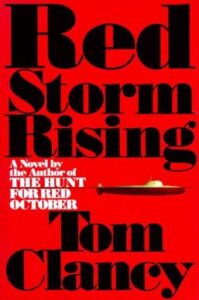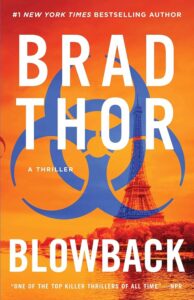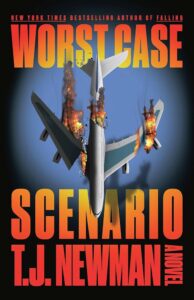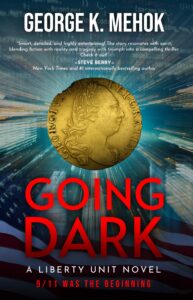Leading up to the election, the Department of Homeland Security sounded the alarm: the country faces a “high risk” of foreign and domestic terrorism. These threats—both real and imminent—are eerily similar to the dangers portrayed in thriller novels over the years.
Few authors have predicted such dangers as accurately as international best-selling author Tom Clancy. In the 1990s, Clancy—an insurance agent turned novelist—made headlines with his geopolitical thrillers that blurred the lines between fiction and reality. Clancy’s ability to predict future security risks was uncanny, making his work seem more like prophecy than fiction.
But Clancy isn’t alone in foreseeing future threats. Many thriller writers, using meticulous research and deep knowledge of current events, technology and geopolitics, have crafted stories that highlight, and in many cases expose the vulnerabilities of our society.
Thrillers not only entertain but also warn us about what could happen if we fail to act and prepare.
Let’s explore how thrillers have foreshadowed real-world attacks and national security events over the past five decades.

1980s: Red Storm Rising by Tom Clancy (1986)
The Russian-Ukraine war, now entering its second year, has resulted in thousands of deaths and brought Europe to the brink of a larger-scale conflict. The instability in the region, along with geopolitical maneuvering, evokes Clancy’s Red Storm Rising, a classic Cold War-era thriller that imagines a full-scale war between NATO and the Soviet Union.
The novel follows the once-powerful Soviet Union, desperate to control global oil supplies, launching a surprise invasion of Europe. What made Red Storm Rising so gripping wasn’t just its complex military tactics but the way it reflected real-world fears of the Cold War spiraling out of control.
Although the Cold War ended without the large-scale military conflict depicted in the book, we have yet to find out how the current conflict will end. Clancy’s mastery of military strategy and weaponry, combined with his keen understanding of geopolitics, paints an alarming picture of how close we are to a third world war.

1990s: Debt of Honor by Tom Clancy (1994)
If Red Storm Rising was about the broader geopolitical chess game, Debt of Honor hit closer to home—quite literally. The novel follows a disgruntled Japanese pilot who, angered by U.S. economic policies, hijacks a commercial airliner and crashes it into the U.S. Capitol during a joint session of Congress. The attack wiped out much of the U.S. government’s leadership in one fell swoop.
When the book was published in 1994, the idea of using airplanes as weapons of mass destruction seemed far-fetched to most. However, Clancy’s chilling scenario foreshadowed an attack that transformed a nation and the world.
Debt of Honor wasn’t just a warning—it was a prophecy that, tragically, came true.

2000s: Blowback by Brad Thor (2005)
Thor’s novel offered a glimpse into the future of terrorism, particularly the rise of non-state actors and decentralized terrorist cells.
What makes Blowback so prescient is its focus on the global nature of terrorism, where militant groups don’t rely on a single leader or state sponsor. Instead, they operate in the shadows, recruiting members worldwide and leveraging the internet to spread their ideology. This scenario foreshadowed the rise of ISIS in the 2010s, a group that used similar tactics to recruit fighters and orchestrate attacks throughout the Middle East and Europe.
Like Clancy, Thor’s thrillers aren’t just entertaining—they’re cautionary tales about the evolving nature of global terrorism. Blowback highlights how terrorists exploit weak points in national security, a theme that continues to resonate in the post-9/11 world.

2010s: Ghost Fleet by P.W. Singer and August Cole (2015)
Ghost Fleet stands out as one of the most chillingly realistic techno-thrillers. The novel imagines a future conflict between the U.S. and China, where the primary weapons are not just tanks and missiles but cyber-attacks, satellite sabotage, and high-tech espionage.
In the years since the novel’s publication, cyber-attacks have become a growing threat, particularly from state actors like China and Russia. The SolarWinds hack in 2020, which compromised thousands of government and private systems in the U.S., is a perfect example of how cyber warfare has become a key battleground in modern conflict. Ghost Fleet predicted this shift in warfare, where technology and cyber vulnerabilities play a central role in the global power struggle.
The novel’s depiction, where satellites are taken offline, and critical infrastructure is hacked, is increasingly relevant as our enemies overtly deploy their cyber and space warfare capabilities. Ghost Fleet serves as both a thriller and a stark warning about the future of modern warfare.

2020s: Worst Case Scenario by T.J. Newman (2024)
In Worst Case Scenario, T.J. Newman imagines a catastrophic chain reaction that feels all too plausible today. The novel opens with a commercial airliner crashing into a nuclear power plant in Waketa, Minnesota, after the pilot suffers a mid-flight heart attack. This disaster quickly escalates into an unprecedented event highlighting the potential fragility of critical infrastructure.
Newman’s work explores how such a crisis could overwhelm emergency response teams, endanger entire communities, and test the limits of even our most secure systems. Through the experiences of power plant workers, firefighters, and local families, Worst Case Scenario brings a human element to this high-stakes thriller, showcasing the courage and resilience needed to face unthinkable events.
More than just a fictional thriller, Newman’s novels serve as a wake-up call, reminding us of the delicate balance upon which our modern world rests.
***


















